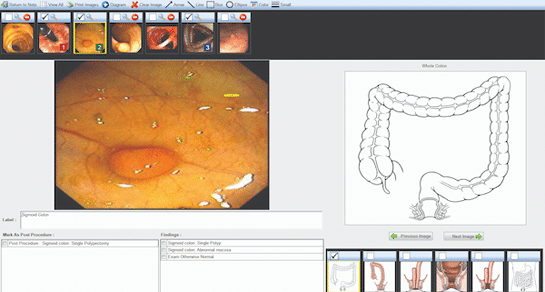Improve Your Clinical Documentation with Provation Software
With Provation physician documentation software you'll get these exciting benefits, which will help improve clinical documentation and physician procedure notes across your hospital, ASC and/or health system.
Intuitive Workflows
Guides physicians through a navigation tree to offer appropriate selections for quick documentation
EHR Interoperability
Interfaces with existing electronic health record (EHR) systems for seamless, complete continuity of care
Native Image
Capture
Connects directly with endoscopy scopes to collect all relevant images and add them to procedure notes
Gastroenterology Content
Gives clinicians access to GI content collected over 25 years to ensure thorough documentation and accuracy
Automated
Coding
Generates CPT and ICD-10 codes based on procedure note selections for maximum accurate reimbursement
Not sure which gastroenterology software solution is best for your team?
Clinical Documentation Improvement (CDI) Starts with Physician Documentation
You don't need a clinical documentation improvement (CDI) expert to tell you that point-of-care physician documentation, also known as clinical procedure documentation, is critical to providing quality patient care. Nor do you need a comprehensive, organization-wide CDI program, which can take years to implement.
Start with Provation, the physician's choice for clinical procedure documentation software. With Provation clinical documentation software, you can solve common issues with physician documentation.
That means no more:
- Misinterpretation of procedure notes and findings due to illegible handwriting or poor transcription
- Frustrated, inefficient physicians and care teams because of complicated navigations and poorly designed EHR workflows
- Disjointed, siloed patient records and continuity of care due to a lack of EHR interoperability or endowriter integration
- Medical coding and billing errors because of inaccurate, misunderstood or incomplete capture of procedure details
- Strained doctor-patient relationships due to electronic burdens and interruptions that distract from patient care

